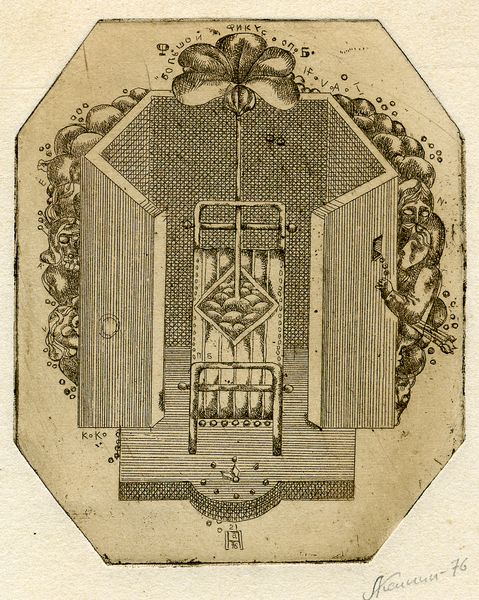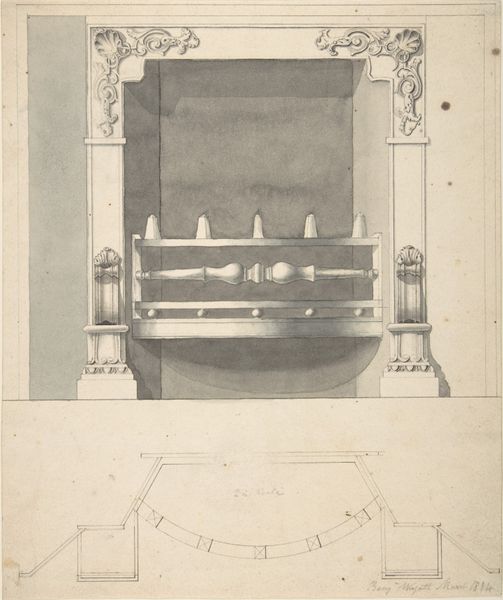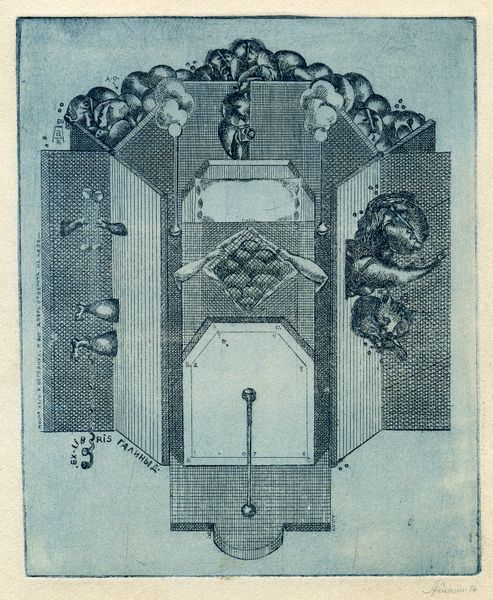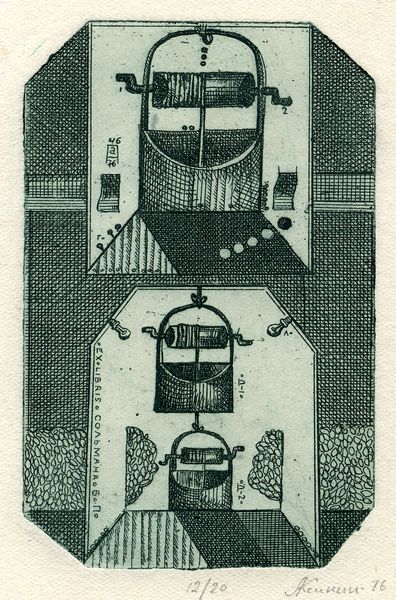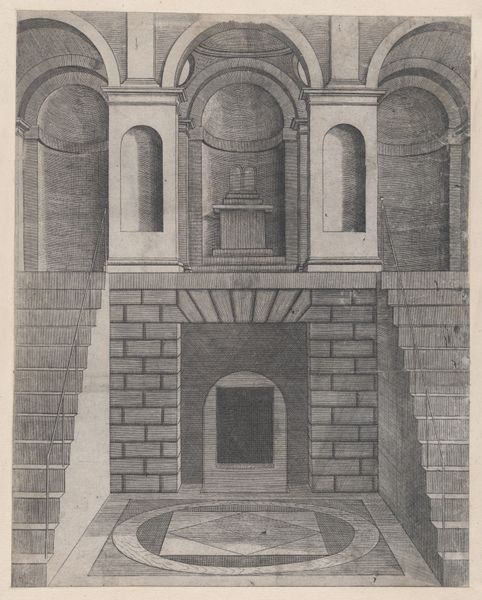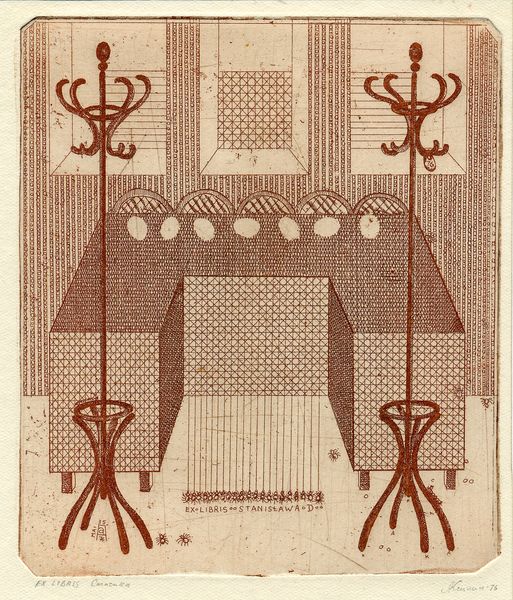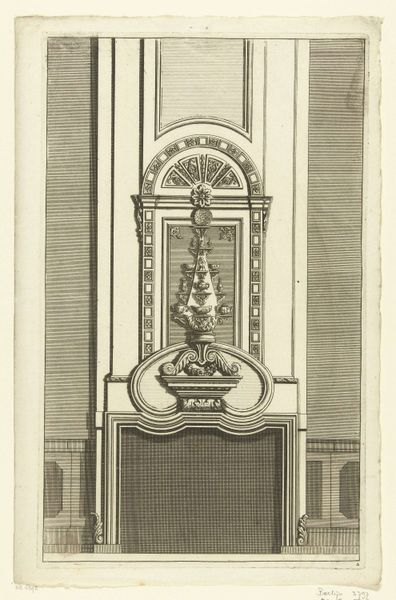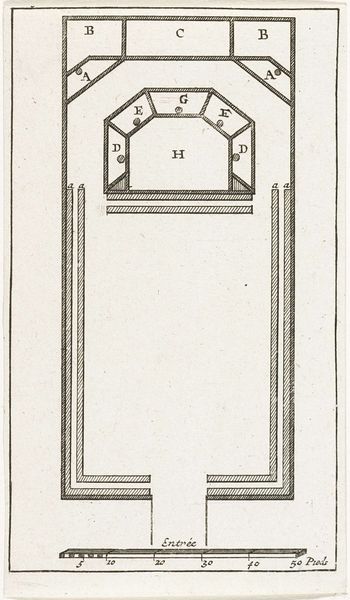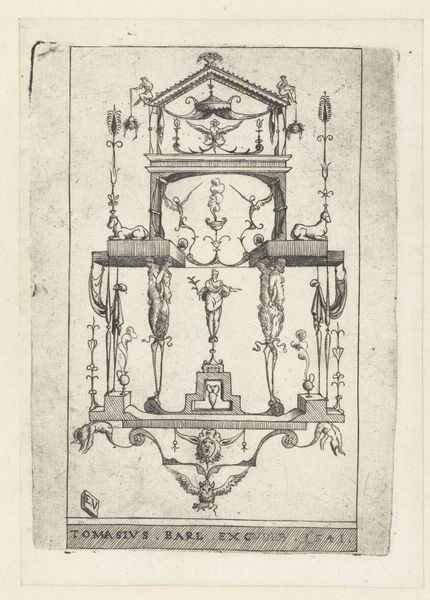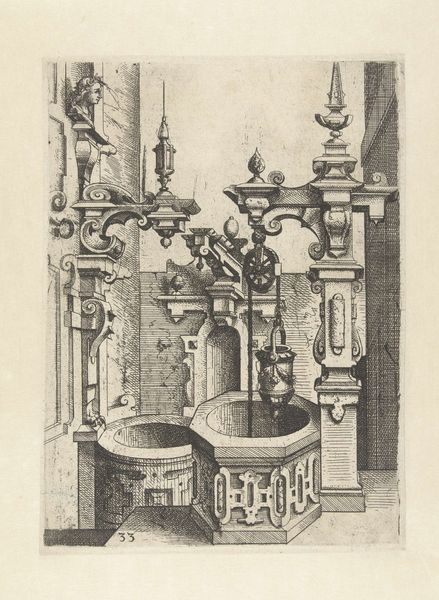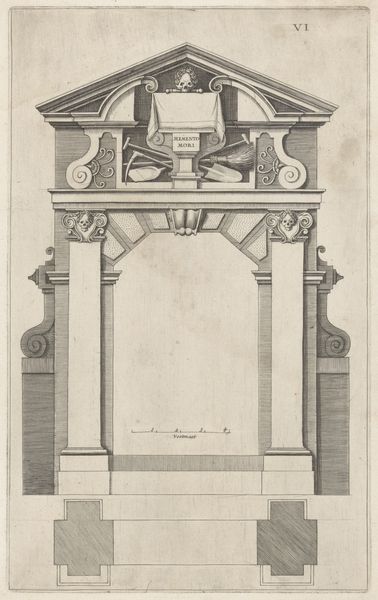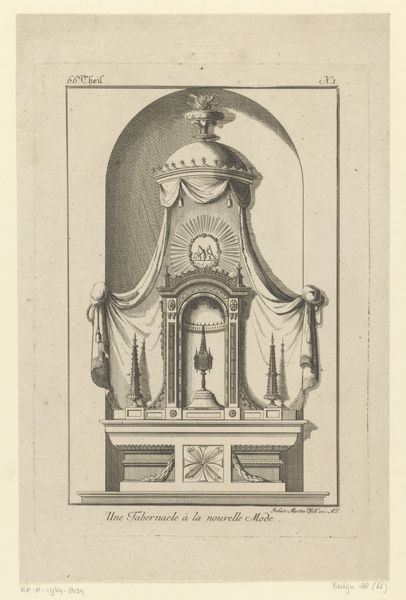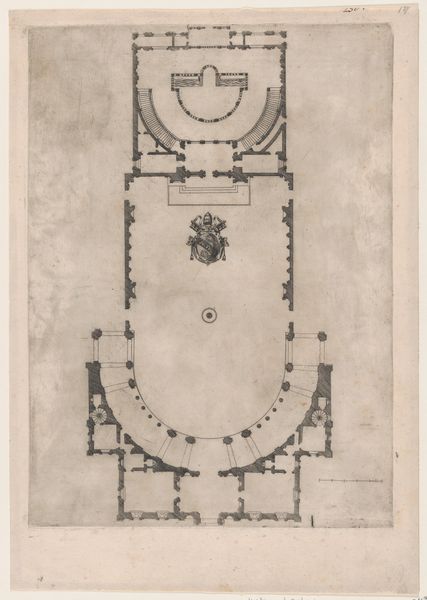
print, intaglio, paper, engraving
# print
#
intaglio
#
paper
#
geometric
#
engraving
Copyright: Oleksandr Aksinin,Fair Use
Curator: This is Oleksandr Aksinin's "Exlibris of E. Buryakovska," created in 1976 using intaglio engraving on paper. My immediate reaction is feeling transported to a really surreal space. I am getting strong institutional vibes. Editor: Yes! This is a strange little piece, isn’t it? Aksinin conjures an unnerving space. The stark geometry is so deliberate. Look how the converging beds create a V-shape, aiming towards the central table with the object—a glass bell—at the back of the room, but also seems to divide or section this space with its acute shape. The texture is extremely intricate and gives a slightly off-putting feel of artificial space Curator: It does evoke that unease really powerfully. Considering its purpose as a bookplate, I wonder if this room suggests a space of interiority, or the confines of memory. A little room of the soul, perhaps. Those straight walls really create that claustrophobic feel. You wouldn’t expect that of a print; usually that feel has a relation with large sculptures. But here, the geometry and choice of tone are the components to build up space. Editor: That's insightful! The limited palette accentuates the somber mood. Note how he contrasts light and shadow to give dimension, as with the glass object under the geometric shapes attached by strings. It acts almost as the light source, albeit a gloomy one, or as a mirror reflection through the string structure hanging from the ceiling in the back of the room, as opposed to the darker tones found within the "V" between the beds and the adjacent side walls. All creating that contrast that adds drama to the scene, while still keeping this balanced composition in check. Curator: Absolutely. There's a fragility implied by the strings attached on both sides, which juxtaposes against the apparent solidity of the metal beds and surrounding architecture. I keep being drawn to the light fixture as the symbolic heart of this bookplate, don’t you think? It's like a trapped thought or inspiration. What do you think Buryakovska made of the print? Editor: What’s striking, finally, is the use of geometric patterns juxtaposed with the everyday. Aksinin isn't just representing space, but dissecting it—exploring its components of geometric, artificial pattern and potential anxieties. Curator: Aksinin gifts us with this unsettling beauty in a space contained, suspended somewhere between the tangible and the oneiric—or to better put it, between memory and geometric order. Editor: A perfectly claustrophobic encapsulation.
Comments
No comments
Be the first to comment and join the conversation on the ultimate creative platform.
